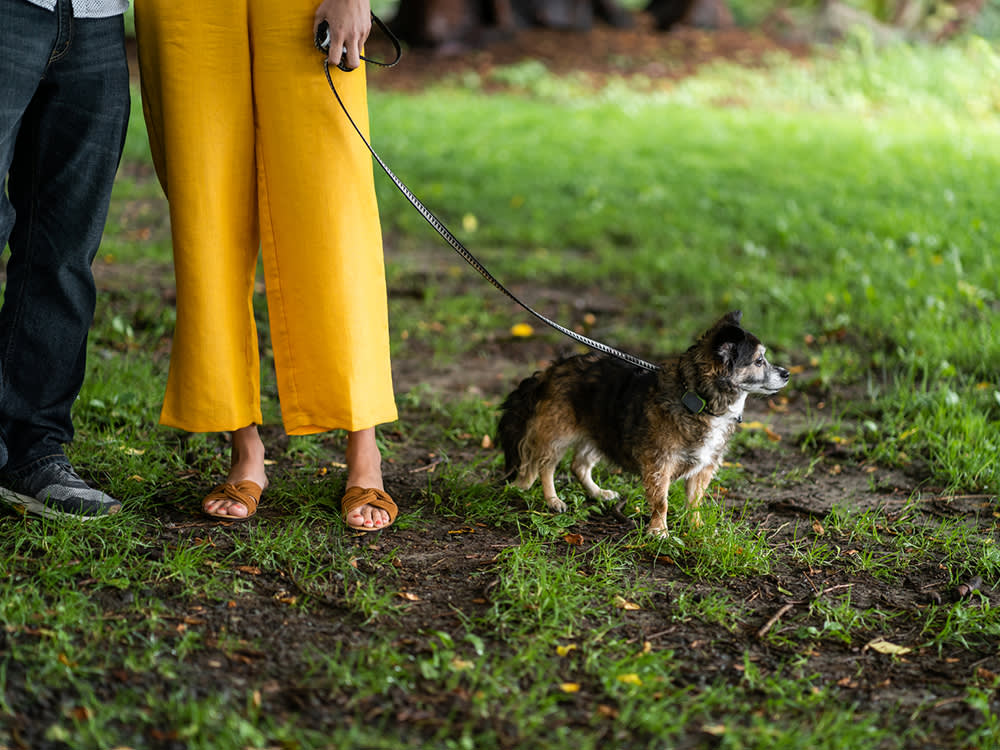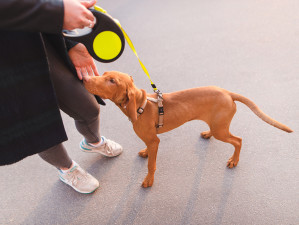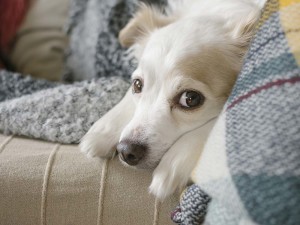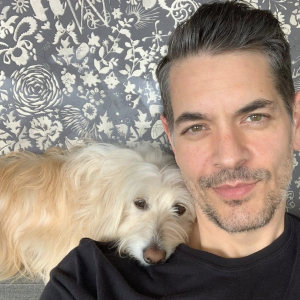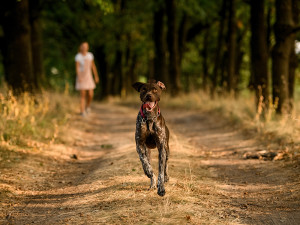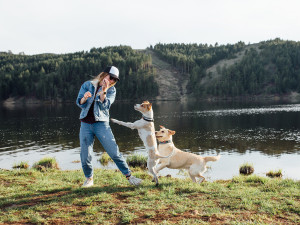“Help, My Adult Dog Refuses to Pee Outside”
Kinship Collective dog trainer Robert Haussmann’s tips for helping an adult dog learn to go outside in a new environment.
Peach is a four-year-old Pomeranian / mini Poodle mix. He had an excellent start to life. Ever since my spouse, Peach, and I moved from our 600 square-foot city apartment into a 2,000+ square foot suburban home we share with another couple and dog, our pup has decided that every room is the bathroom. He pees and poops everywhere. We’ve tried giving him more built-in potty times, but he no longer requests to go outside; he just finds a secret spot. We’ve tried potty bells (he’s afraid) and keeping doors shut, but I think the environment is just so different.
Wow — congrats on the big move. Moving is stressful for humans and dogs alike. You’re right that environment is a factor in Peach’s behavior. His routine is off; there’s more space. He doesn’t yet understand the ritual of going to the bathroom in your new home. He might be confused if he’s used to going to the bathroom on the cement, and suddenly we’re asking him to go on a big grass yard. The same goes for if he went on a leash and now he’s free to roam. There are several ways we can help Peach adjust to his new surroundings.
Trick question: All dogs are perfect! But find out which type is the best fit for you.
Keep the conditions as similar as possible.
If he’s used to urinating and defecating on cement, bring him out to the cement. If he would go on walks, take him for a walk. Sometimes when we go from the city to the suburbs, we put a dog out on the yard and the dog just doesn’t get it — they have no way of knowing that’s their new going-out routine.
Don’t punish accidents.
Right now, going to the bathroom is self-rewarding for Peach. If he poops behind the couch and no one sees it, he’s fine with that; it feels good, and it was successful. Even if you see him an hour later and tell him “no,” he doesn’t know what you’re talking about. And if you catch a dog in the act and get really mad, they’ll just assume you have a weird hang-up about urine, and then they’ll try to hold it when you’re around — which is a problem when you’re trying to get them to go outside.
How much do you spend on your pet per year?
Bringing a dog back to their own urine and rubbing their face in it just freaks them out, I promise. They aren’t learning from that experience. So even though it’s frustrating, if he goes inside, chalk it up to confusion. Don’t get angry with him.
Put your dog’s food on a schedule.
In order to train your dog to go in a certain area, you need to know when the dog needs to go. The first thing we need to do is schedule what goes in and what goes out. You’ll want to put food and water down on a schedule. I would keep a log of what goes in and what time it goes in and what comes out and what time it comes out — and where. So, if you know your dog drinks water at 8 AM and then pees in the house by 9 AM, you can start to understand what’s going on with that dog’s biology. We need to be at the right place at the right time.
If you can’t figure out their schedule or they’re refusing to go outside when you take them, you might have to keep your dog confined to a crate or leashed by your side so he can’t wander off and do his business away from you. You want to know where he is and what he’s doing. If you see him start to sniff around, you can try to rush him to the right place. The idea is to not allow him to have the need while he’s inside and doesn’t know where to go.
Reward, reward, reward.
When he eventually goes outside, tell him he’s amazing. Give him a high, high value treat — make it a celebration. Eventually, he’ll learn that the yard is the most rewarding place to do his business.
In summary, your first goal is to be able to predict when Peach has to go, that way you can be around to show him the right place. You can do this by feeding on a schedule and keeping Peach within eyesight. Don’t punish, and don’t be afraid to experiment with outdoor spaces. It’s a big move, and Peach needs some time to adjust — but with time and patience, he’ll get a hang of suburban life.
